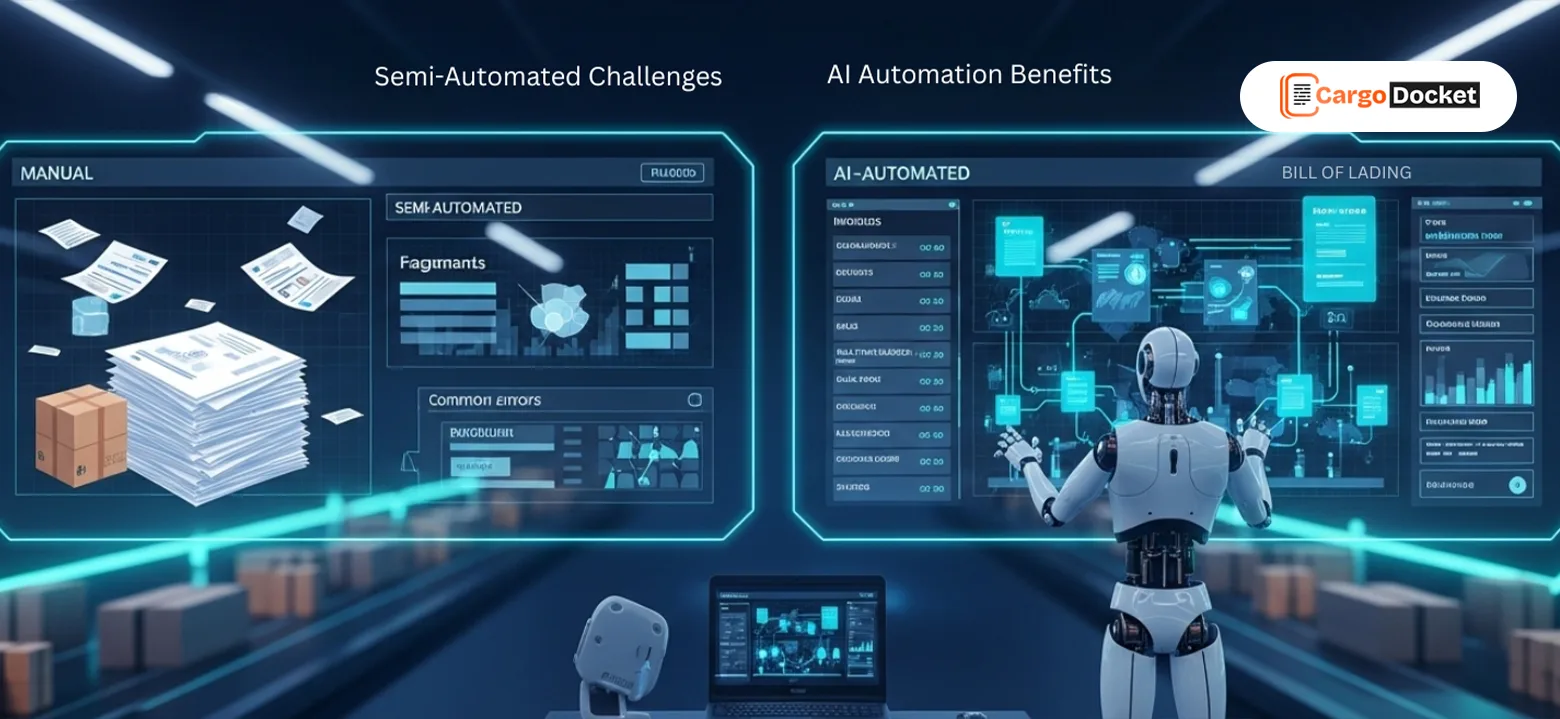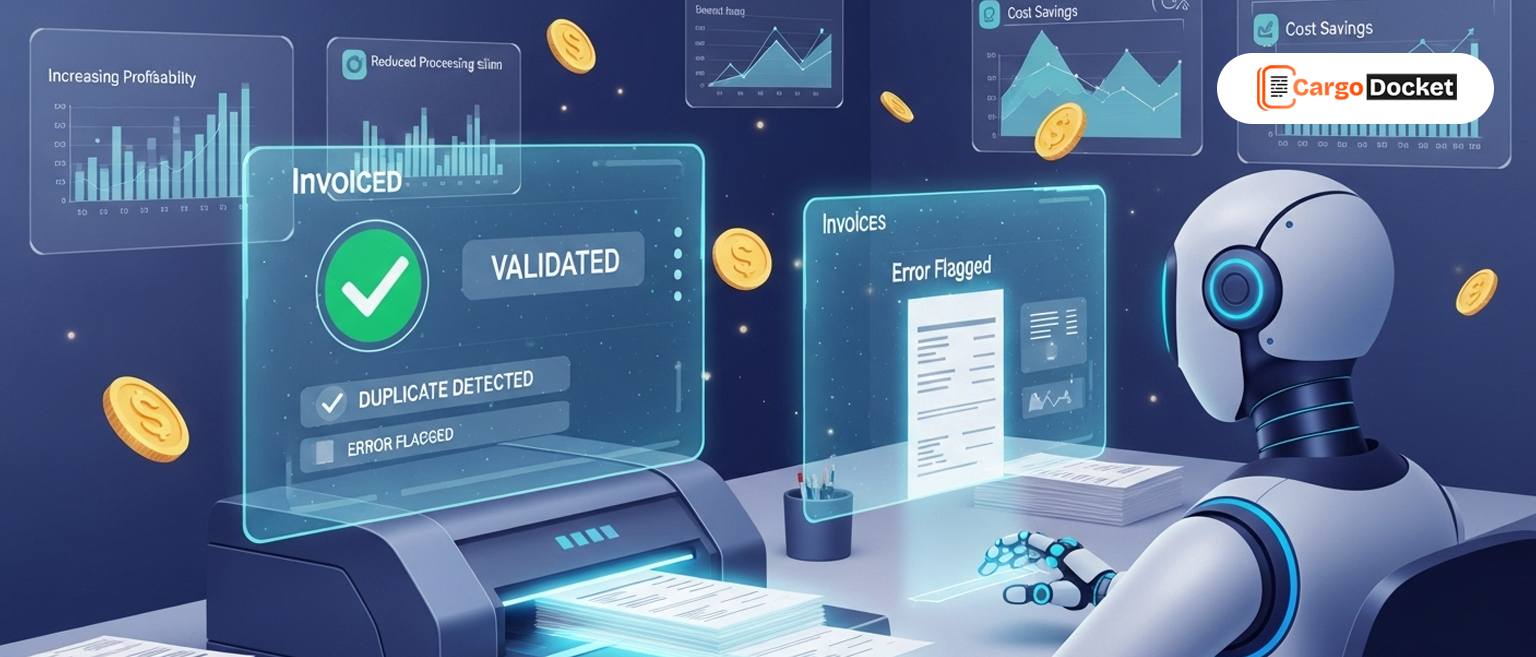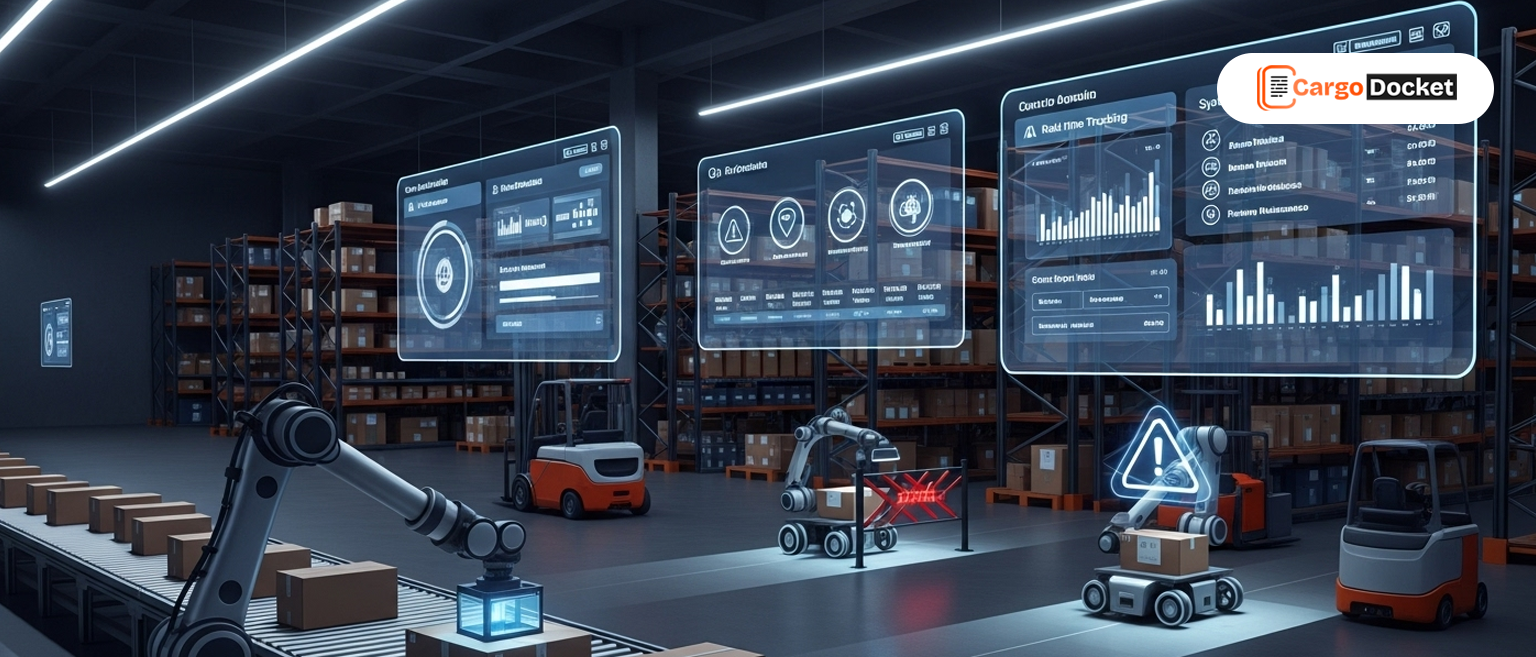When freight documents arrive, whether that’s a Bill of Lading, commercial invoice, proof of delivery, or shipment manifest, an AI-driven system swings into action. First, it scans these documents using a powerful combo of OCR, NLP, and machine learning. This technology reads both typed and handwritten text, turning unstructured documents into meaningful data.
Next, the system validates key fields, like shipper and consignee names, container numbers, weights, or port details, by cross-checking with your ERP or TMS. If anything is off, such as a mismatch in load weight or a typo in a vessel name, the system flags it immediately. This early detection keeps errors from propagating downstream.
Once the data is verified, it’s automatically routed into CargoWise or another logistics platform with zero human keystrokes. That means no more manual entry of dozens of documents every day. With the help of continuous learning, the AI keeps improving, recognizing new document layouts or freight terms without needing someone to update it manually. Over time, it cuts human effort and errors dramatically while boosting efficiency and compliance.
What manual errors does AI automation eliminate?
Manual data entry in freight forwarding is risky business. Human typos, like transposing numbers in a container ID or misreading package weight, can result in missed shipments, customs delays, and invoice penalties. With AI automation, there’s no hitting wrong keys or skipping fields. The system captures every detail accurately and consistently. Even when documents vary in format, different carriers use different layouts, the AI adapts and extracts the correct data reliably.
Beyond transcription mistakes, manual processes are slow. A human might take a minute or two to input and validate a document, but an AI bot can do it in seconds. That speed cuts obstacles, reduces late shipment risks, and prevents manual burnout. Plus, with built-in exception handling, teams only review truly unusual cases, not every document. That reduces stress, returns focus to high-value tasks, and improves team morale.
Why is real-time validation crucial?
Freight forwarding is all about moving goods on schedule while meeting legal and financial standards. That means ensuring containers match booking records, compliance data is correct, and documents are accurate. Manually, teams may validate once per day, if at all, leaving a window for costly errors. AI systems, however, are validated in real time. They immediately check container numbers, voyage details, weights, and HS codes against master data.
If a cargo weight is off or the vessel ID is incorrect, the system catches it before shipment or accounting. This fast feedback loop prevents mistakes from spiraling into fines, shipment delays, or audit issues. In today’s logistics world, where one error can derail an entire supply chain, that kind of protection is essential.
When do businesses see ROI with AI automation?
Adopting AI document automation isn’t a slow, multi-year IT project, it can start delivering returns within weeks. Most freight-forwarding teams start by piloting document types like BoLs or commercial invoices. Within the first month, they often see manual error rates drop by 72–94%, and document processing speed double or better.
Cost savings show up immediately: less overtime, fewer reworks, fewer penalties from compliance issues. Operational efficiency improves dramatically, with faster shipments, fewer customer escalations, and stronger vendor relationships. As teams scale the automation to PODs, customs papers, cargo manifests, and more, the ROI keeps growing, while manual errors and paperwork headaches shrink to nearly zero.
What impact does AI automation have on staffing?
Some teams worry AI might replace people, but in freight forwarding, it frees staff for higher-value responsibilities. When AI handles data entry, validation, and exception alerts, employees spend less time on repetitive tasks. Instead, they can focus on building carrier relationships, resolving shipment issues, and driving process improvements. That shift not only boosts morale but also fuels business growth. Plus, the cost of adding AI bots is far lower than hiring and training new data entry clerks. So instead of growing headcount during peak seasons, your team stays lean, efficient, and agile.
Where should freight companies start with AI document automation?
- Pick a pilot document – Start with high-impact types: BoLs, invoices, PODs.
- Train with real docs – Upload existing samples so the AI learns your formats.
- Connect systems – Integrate with CargoWise, SAP, or your ERP/TMS for automated data flow.
- Monitor early performance – Track error reductions, throughput, and saved hours.
- Scale gradually – Add more document types and lanes as confidence grows.
- Optimize continuously – Iterate on exception logic and validation rules to stay sharp and accurate.
This gradual rollout ensures stable adoption without disrupting operations, while demonstrating quick wins that drive further investment.
Who’s using AI automation today?
Forwarders, NVOCCs, and logistics teams across the globe are already benefitting from AI document automation. There are various reports showing reductions of manual errors by up to 96%, document processing speed increases of 42–64%, and labor savings of over 35%. Compliance issues drop, audit readiness improves, and shipment accuracy climbs. For teams aiming to scale without crashing under paperwork burdens, AI automation is an important criterion.
Conclusion
Freight forwarding runs on data, and manual data entry is its weakest link. Typoes, delays, and compliance hiccups sabotage margins and damage reputations. AI document automation fixes that by scanning, validating, and routing data at lightning speed with minimal errors. It frees your team from admin drudgery and delivers immediate cost savings, improved efficiency, and compliance confidence.
If you’re tired of chasing shipment errors or scrambling to fix manual mistakes, it’s time to let AI step in. Start small, track the impact, and scale up. Book a demo to discover how AI document automation can transform your freight operations, cutting manual errors, saving time, and delivering real results today.




